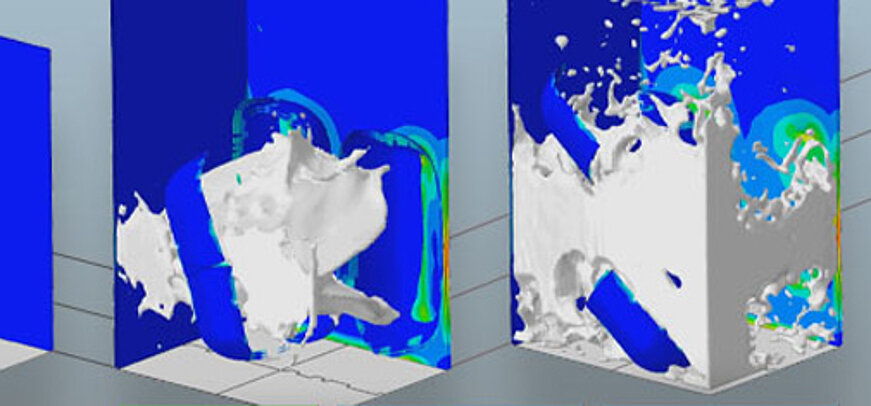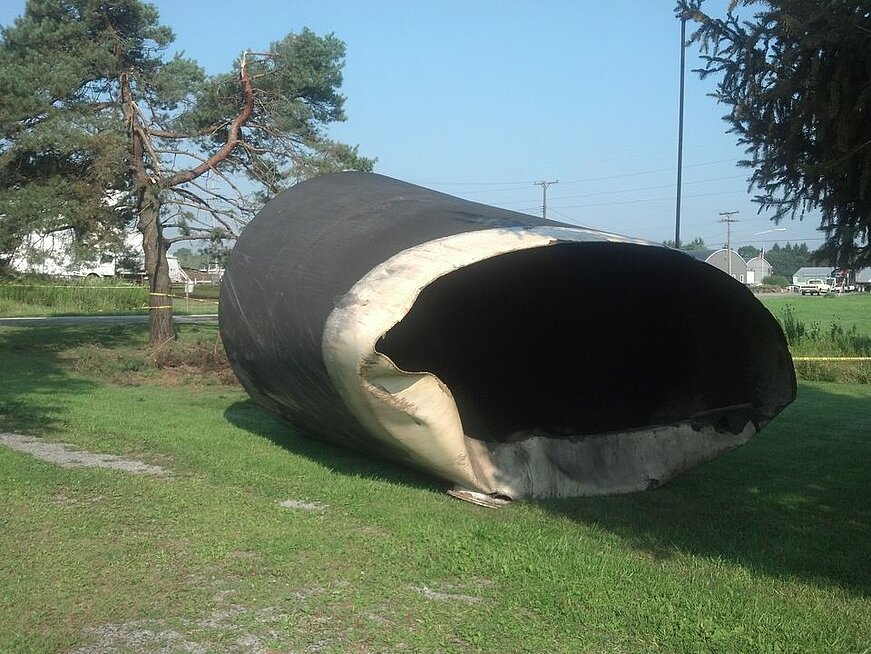Container stability under high pressure: design of test chambers

As a student at the University of Stuttgart, I was impressed by a test of the effects of bursting pressure on containers at the Bundeswehr site in Meppen. Containers several centimeters thick exploded and were unrecognizable. The experiments were carried out safely. The bursting pressure was about 170 bar.
This was about 35 years ago.
The requirements for the compressive strength of the containers have increased since then. The maximum pressure is now the once unthinkable 25,000 bar, although with very small container diameters.
But also hydrogen tanks for cars can already withstand tests up to 1200 bar. The dimensions here are in the range of about 1 m. Drilling rods in oil and gas production produce pressures of up to 1000 bar. The samples under investigation are up to 15 meters long. Significantly larger sizes prevail here, such as in high-pressure injection systems.
In order to ensure that the pressure does not reach the compression or bursting pressure limits that could cause the component to collapse, an experiment must be performed. To do this, the device under test is immersed in a test chamber with water at high pressure. If air is used, it will cause the specimen to fail because the stored energy due to air compression increases, as my earlier experiments at Meppen confirmed.
But even water, which is incompressible at these pressures, compresses, which cannot be neglected and thus stores a large amount of energy, which is approximately equal to the energy stored in the container itself. The total energy varies in the amount achieved by a small car at 120 km/h.
The test must be conducted in such a way that people are not endangered in the first place. It must also be carried out in a test chamber so as not to cause damage to objects, buildings or structures. If one does not understand this area, it can happen that even when testing with water, the specimen under examination will collapse or a 100 kg flap may not be found. Even sandbags may not help here.
The test chambers must be designed to last as long as possible even after the specimen (be it a pump casing, tank, hose, pipe or drill rod) has ruptured. Determining the magnitude and direction of the fragment energy is a prerequisite without which a rational test cell design is hardly possible.
Merkle & Partner specializes in the calculation of test chambers and is the world leader here in the area of modeling, sizing and construction of various safety concepts. We can simulate the rupture of a pump weighing 25 tons at an internal pressure of 300 bar, just as we can simulate the behavior of a gas tank. It does not matter if we use water or gas for this.
This video shows a simulation of a cylindrical water container rupture:
Container rupture, fragment behavior, and hydroimpact on the container walls will be physically accurate. Since the tests are safely performed on our computer, it is not necessary to perform them in Meppen.
We can calculate the dimensions of the test chamber and the concept so as to avoid unnecessary material consumption. This saves money and gives guarantees!
My experience in calculating test chambers that have been built by companies without the appropriate knowledge shows that risks can be underestimated.
Questions can be directed to Dr. Mike Brehm, Head of Structural Mechanics in Heidenheim am Brenz (m.brehm@merkle-partner.de).
I look forward to your feedback!
Stefan Merkle
PS:
Designing and inspecting high pressure tanks to various standards (AD 2000, EN 13445, ASME Sect. 8 Div. 1+2, ASME Sect. 3, EN 1591, PD 5500, KTA, RCC-M) is our competence center in Hamburg. Here you can find the contact details of the branch manager, Alexander Haas (a.haas@hh.merkle-partner.de).

